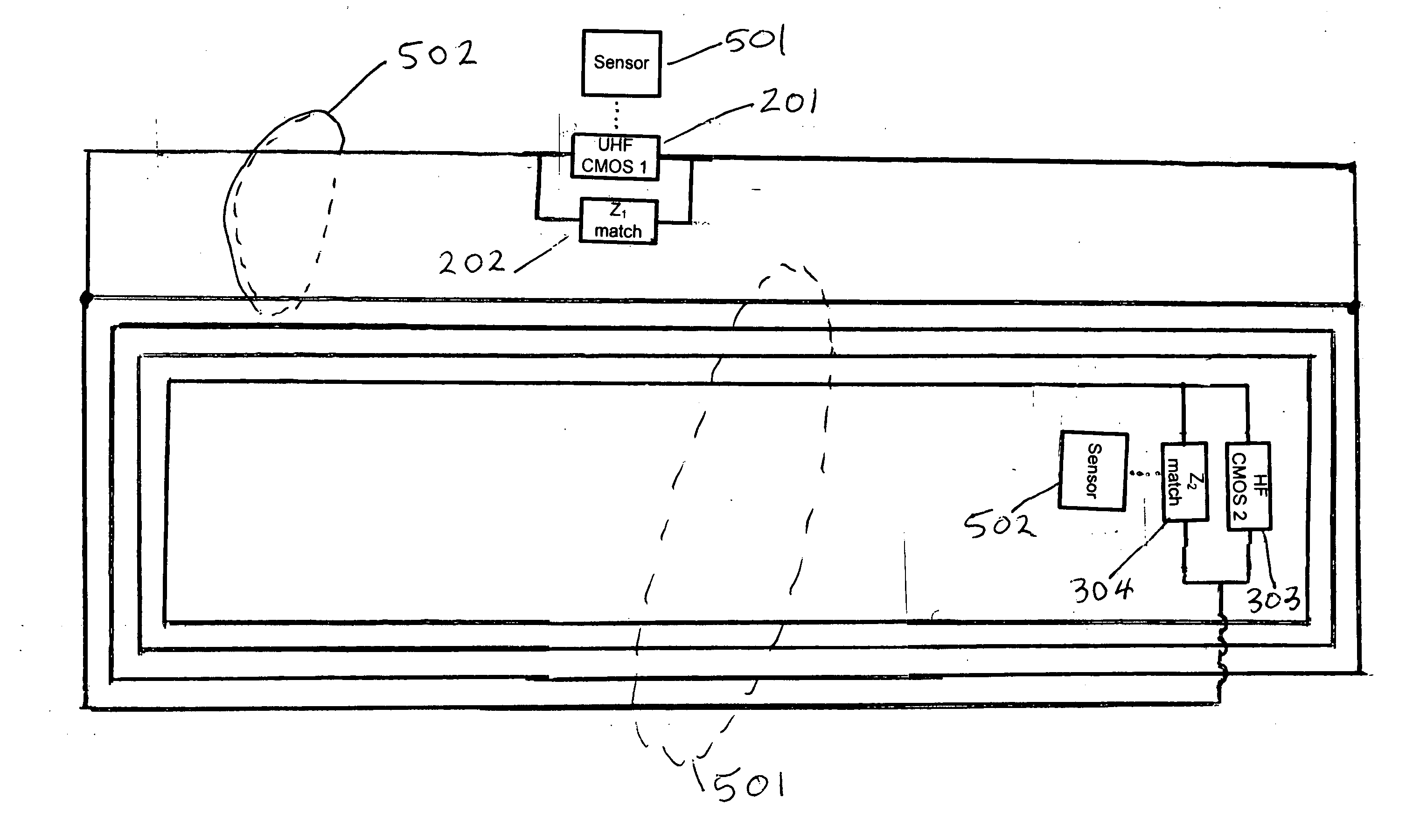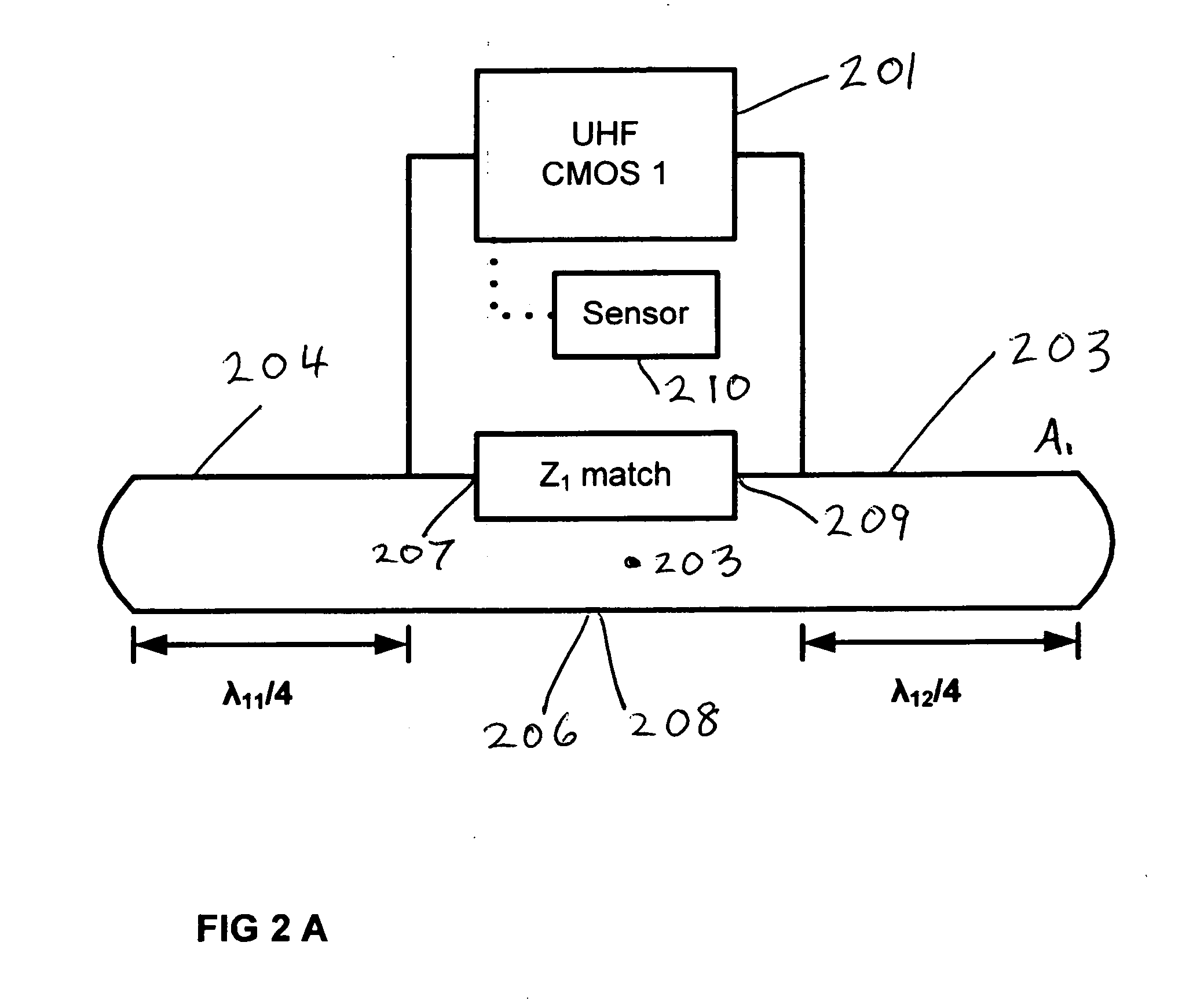Multiband RFID tag
a multi-band, wireless technology, applied in the direction of antenna details, electrically long antennas, antennas, etc., can solve the problems of limited uhf range, limited range, spatial field pattern coverage, etc., and achieve the effect of not teaching operation with sensitivity
- Summary
- Abstract
- Description
- Claims
- Application Information
AI Technical Summary
Problems solved by technology
Method used
Image
Examples
Embodiment Construction
[0019]The present invention is an RFID tag with antenna structures sensitive to (a) incident electromagnetic radiation in the UHF frequency range, and (b) magnetic induction fields in the LF and HF frequency range.
[0020]FIG. 1 is a schematic illustration of the tag architecture with the multiband antenna 100 connected through the impedance matching circuits 101 to separate UHF and lower frequency RF and communication protocol circuits. The scavenging power supplies 104, 105 supplied by the incident RF energy contains voltage multiplier circuits to increase the voltage to the circuits above the threshold required for reliable operation. This voltage typically is in the range of 1.5 to 3.3 Volts for current state of the art micropower circuitry.
[0021]The lower frequency operational range is referred to as HF in this patent. The frequencies for the application of this patent in the lower frequency range is 100 KHz up to 300 MHz. The higher frequency range for the RFID tag structures in...
PUM
 Login to View More
Login to View More Abstract
Description
Claims
Application Information
 Login to View More
Login to View More - R&D
- Intellectual Property
- Life Sciences
- Materials
- Tech Scout
- Unparalleled Data Quality
- Higher Quality Content
- 60% Fewer Hallucinations
Browse by: Latest US Patents, China's latest patents, Technical Efficacy Thesaurus, Application Domain, Technology Topic, Popular Technical Reports.
© 2025 PatSnap. All rights reserved.Legal|Privacy policy|Modern Slavery Act Transparency Statement|Sitemap|About US| Contact US: help@patsnap.com



